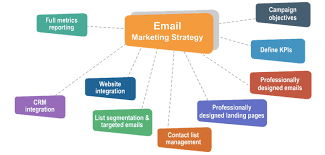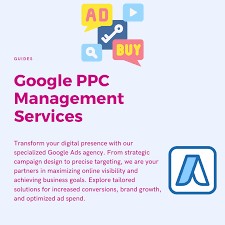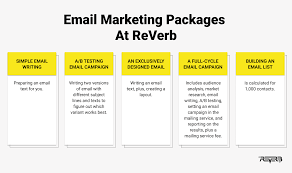Email marketing is a powerful tool that has revolutionized the way businesses communicate with their customers. But what exactly is email marketing, and why is it so important in today’s digital world?
At its core, email marketing refers to the practice of sending commercial messages to a group of individuals via email. These messages can take various forms, such as newsletters, promotional offers, updates, or even personalized recommendations. The goal is to build a relationship with customers and prospects by providing valuable content and relevant information.
One of the key advantages of email marketing is its cost-effectiveness. Compared to traditional forms of advertising, such as print or television ads, email marketing allows businesses to reach a large audience at a fraction of the cost. With just a few clicks, you can send personalized messages to hundreds or thousands of subscribers.
Another benefit of email marketing is its ability to target specific audiences. Through segmentation and personalization techniques, businesses can tailor their messages based on customer preferences, demographics, or past purchasing behavior. This targeted approach ensures that recipients receive content that is relevant and engaging to them, increasing the chances of conversion and customer loyalty.
Moreover, email marketing provides measurable results. With advanced analytics tools available today, businesses can track open rates, click-through rates, conversion rates, and other key metrics to evaluate the success of their campaigns. This data allows marketers to make data-driven decisions and refine their strategies for better results.
Furthermore, email marketing offers automation capabilities that save time and effort for businesses. With automation tools, you can set up automated campaigns triggered by specific actions or events. For example, you can send a welcome series to new subscribers or follow-up emails after a purchase. This automation not only saves time but also ensures consistent communication with your audience.
However, it’s important to note that successful email marketing requires careful planning and execution. Building an engaged subscriber list takes time and effort; it’s crucial to obtain permission from recipients before sending them emails and to comply with data protection regulations. Additionally, crafting compelling and relevant content is essential to keep subscribers interested and prevent your emails from ending up in the spam folder.
In conclusion, email marketing is a powerful tool for businesses to connect with their audience, build relationships, and drive conversions. Its cost-effectiveness, targeting capabilities, measurability, and automation features make it an indispensable part of any comprehensive digital marketing strategy. By harnessing the potential of email marketing, businesses can stay connected with their customers and achieve long-term success in today’s competitive landscape.
8 Essential Tips for Successful Email Marketing Campaigns
- Start by creating an email list of potential customers.
- Personalise your emails to make them more engaging and relevant to the recipient.
- Use segmentation to target specific customer groups or segments with tailored content and offers.
- Write a compelling subject line that will grab attention and encourage people to open the email.
- Include visuals such as images, videos, infographics, etc., to make your emails stand out from the crowd.
- Test different versions of your emails (A/B testing) to determine which ones are most effective at driving engagement and conversions.
- Monitor analytics such as open rates, click-through rates, unsubscribe rates, etc., to understand how successful your campaigns are performing over time and adjust accordingly if necessary .
- Stay up-to-date on best practices for email marketing so you can ensure you’re always getting the most out of your campaigns!
Start by creating an email list of potential customers.
When it comes to email marketing, one of the first steps you need to take is to create an email list of potential customers. Building a strong and engaged subscriber list is the foundation of a successful email marketing campaign.
But why is creating an email list so important? Well, it allows you to have direct access to individuals who have expressed interest in your products or services. These are people who have willingly provided their contact information, indicating that they are open to receiving communication from your business.
To start building your email list, there are a few strategies you can employ. First and foremost, make sure you have clear and prominent opt-in forms on your website. These forms should be strategically placed where visitors can easily see them and be enticed to subscribe. Offer an incentive, such as exclusive content or a discount, to encourage visitors to sign up.
Another effective way to grow your email list is through lead generation campaigns. Create valuable content such as e-books, guides, or webinars that require visitors to provide their email addresses in exchange for access. This not only helps you capture leads but also positions you as an authority in your industry.
Social media platforms can also be leveraged for list building. Use call-to-action buttons on your social media profiles that direct users to sign up for your newsletter or receive updates via email. Additionally, running targeted ads on social media platforms can help drive traffic and generate new subscribers.
Remember that quality matters more than quantity when it comes to building an email list. Focus on attracting individuals who are genuinely interested in what you have to offer rather than simply aiming for a large number of subscribers. Engage with your audience regularly by sending them valuable content and personalized offers that cater to their needs and interests.
Lastly, always ensure that you comply with data protection regulations and obtain permission from subscribers before sending them emails. This builds trust with your audience and helps maintain a positive reputation for your business.
In conclusion, starting by creating an email list of potential customers is a crucial step in email marketing. By capturing the contact information of individuals who are genuinely interested in your business, you can establish direct communication channels and nurture relationships that lead to conversions and long-term success.
Personalise your emails to make them more engaging and relevant to the recipient.
In the world of email marketing, personalization is key. Gone are the days of generic, one-size-fits-all messages that end up in the spam folder. Today, successful email campaigns rely on personalizing content to make it more engaging and relevant to the recipient.
Personalization involves tailoring your emails to specific individuals based on their preferences, demographics, or past interactions with your brand. By addressing recipients by their name and using dynamic content that speaks directly to their needs and interests, you can create a more intimate and meaningful connection.
One of the simplest ways to personalize your emails is by using merge tags to insert the recipient’s name in the subject line or within the body of the email. This small touch makes a big difference in capturing attention and creating a sense of individualized communication.
Beyond just using a name, personalization can extend to other aspects of your email content. For example, you can segment your audience based on their purchase history or browsing behavior and send tailored recommendations or offers that align with their preferences. This level of customization shows that you understand your customers’ needs and are willing to provide them with valuable solutions.
Moreover, personalization can also be applied to the design and layout of your emails. By creating visually appealing templates that match your recipients’ preferences or align with their previous interactions with your brand, you enhance engagement and encourage them to take action.
The benefits of personalization in email marketing are numerous. Firstly, personalized emails have higher open rates as recipients are more likely to be intrigued by content that directly relates to them. Secondly, personalized emails lead to increased click-through rates as recipients feel a stronger connection with the message and are more inclined to explore further.
Furthermore, personalization fosters customer loyalty by making recipients feel valued and understood. When customers receive relevant content that caters specifically to their needs, they are more likely to remain engaged with your brand over time.
However, it’s important not to overdo personalization. Striking the right balance is crucial. Bombarding recipients with excessive personal details or using incorrect information can come across as intrusive and damage your reputation. Always ensure that the data you use for personalization is accurate and up-to-date.
In conclusion, personalizing your emails is a powerful technique to make your email marketing campaigns more engaging and relevant. By addressing recipients by their name, tailoring content to their preferences, and creating visually appealing designs, you can forge stronger connections with your audience and drive better results. Embrace the power of personalization in your email marketing strategy and watch as your engagement rates soar.
Use segmentation to target specific customer groups or segments with tailored content and offers.
In the world of email marketing, segmentation is a game-changer. It allows businesses to divide their customer base into specific groups or segments and deliver tailored content and offers to each segment. But why is segmentation so important, and how can it benefit your email marketing efforts?
Segmentation enables you to understand your audience better and cater to their specific needs and interests. By dividing your subscribers into groups based on demographics, preferences, behavior, or purchase history, you can create targeted campaigns that resonate with each segment. This personalized approach increases the chances of engagement and conversion.
When you send relevant content and offers to a specific segment, you demonstrate that you understand their unique requirements. For example, if you have an online fashion store, you can segment your subscribers based on gender, age group, or style preferences. By sending tailored emails featuring clothing items that align with their tastes, you increase the likelihood of them making a purchase.
Segmentation also allows you to optimize your email marketing ROI. Instead of sending generic messages to your entire list, which may not resonate with everyone, you can focus your efforts on segments that are more likely to respond positively. This targeted approach helps improve open rates, click-through rates, and ultimately conversions.
Moreover, segmentation helps in building stronger relationships with your customers. When subscribers receive content that is relevant to their interests or needs, they feel valued and understood by your brand. This builds trust and loyalty over time as they perceive your business as one that caters specifically to their preferences.
To implement segmentation effectively in your email marketing strategy, start by collecting relevant data from your subscribers at the time of sign-up or through surveys. This could include information such as location, age range, purchasing history or interests. Then use an email marketing platform that offers robust segmentation capabilities to organize your subscriber list into various segments based on these criteria.
Once segmented, craft tailored content for each group that addresses their unique pain points or desires. Personalize your subject lines and email copy to make each recipient feel like the message was designed specifically for them. You can also use dynamic content blocks within your emails to display different offers or images based on the segment’s preferences.
In conclusion, segmentation is a powerful tool in email marketing that allows you to deliver personalized and relevant content to specific customer groups. By understanding your audience better and tailoring your messages accordingly, you can significantly improve engagement, conversions, and customer loyalty. Embrace segmentation as a vital part of your email marketing strategy and unlock its potential to drive success for your business.
Write a compelling subject line that will grab attention and encourage people to open the email.
The subject line of an email is like the cover of a book – it’s the first thing people see, and it can make or break their decision to open and read your message. In the world of email marketing, crafting a compelling subject line is crucial to grab attention and encourage recipients to click that “open” button.
A well-crafted subject line should be concise, intriguing, and relevant to the content of your email. It should pique curiosity and create a sense of urgency or excitement. Here are some tips to help you write a subject line that stands out:
- Keep it short and sweet: People receive numerous emails every day, so make sure your subject line is concise and to the point. Aim for around 4-7 words or 40-50 characters to ensure it’s fully visible in most email clients.
- Personalize when possible: Personalization can significantly increase open rates. Use the recipient’s name or other relevant information in the subject line to make it more tailored and engaging.
- Create a sense of urgency: Incorporate words like “limited time offer,” “exclusive,” or “ending soon” to create a sense of urgency that motivates recipients to open your email promptly.
- Use numbers or statistics: Including numbers or statistics in your subject line can make it more eye-catching and intriguing. For example, “5 proven strategies for boosting sales” or “Discover the secrets behind 80% customer retention.”
- Ask a question: Pose an intriguing question that sparks curiosity and encourages recipients to find out the answer within your email content.
- Highlight benefits or offers: Clearly communicate the benefits or offers within your subject line to entice recipients into opening your email. For example, “Get 50% off on all orders today only!”
- Test different approaches: A/B testing can help you determine which subject lines perform best with your audience. Experiment with different styles, tones, or keywords to see what resonates most effectively.
Remember, the subject line is your first impression, so make it count. By crafting a compelling subject line that grabs attention and entices recipients to open your email, you increase the chances of engaging with your audience and achieving your email marketing goals.
Include visuals such as images, videos, infographics, etc., to make your emails stand out from the crowd.
In the world of email marketing, standing out from the crowd is crucial to capturing your audience’s attention. One effective way to achieve this is by incorporating visuals into your emails. By including images, videos, infographics, and other visual elements, you can make your emails more engaging and memorable.
Visuals have the power to convey information quickly and effectively. A well-placed image or video can instantly grab the reader’s attention and communicate your message in a visually appealing way. Whether you’re showcasing a new product, sharing a success story, or providing valuable tips, visuals can enhance the impact of your content.
Including visuals in your emails also helps break up text-heavy content and makes it easier for readers to digest information. People tend to skim through emails rather than reading every word, so using visuals strategically can help highlight key points and draw attention to important details. Infographics are particularly useful for presenting complex data or statistics in a visually appealing and easy-to-understand format.
Moreover, visuals can evoke emotions and create a more personal connection with your audience. By using images that resonate with your brand’s values or by incorporating videos that tell a compelling story, you can elicit emotional responses that strengthen the bond between your brand and your subscribers.
However, it’s important to use visuals wisely and purposefully. Too many images or large file sizes may slow down email loading times or trigger spam filters. Optimize your visuals for email by compressing images without sacrificing quality and ensuring that videos are hosted on reliable platforms that support email playback.
Additionally, remember to include alt text for images in case they don’t load properly or for subscribers who rely on screen readers. Alt text provides alternative descriptions of images so that everyone can understand the content of your email even without seeing the visuals.
In conclusion, incorporating visuals into your email marketing strategy is an effective way to make your emails stand out from the crowd. Visuals grab attention, enhance engagement, and convey information in a more compelling manner. By using images, videos, infographics, and other visual elements strategically, you can create memorable and impactful emails that leave a lasting impression on your audience.
Test different versions of your emails (A/B testing) to determine which ones are most effective at driving engagement and conversions.
In the world of email marketing, one of the most valuable tips to remember is to test different versions of your emails through A/B testing. This technique allows you to determine which email variations are most effective at driving engagement and conversions.
A/B testing involves creating two or more versions of an email and sending them to a subset of your audience. Each version will have a slight difference in elements such as subject lines, call-to-action buttons, images, or content layout. The goal is to identify which version resonates best with your subscribers and achieves the desired outcomes.
By conducting A/B tests, you can gain valuable insights into what works and what doesn’t when it comes to your email campaigns. It allows you to make data-driven decisions rather than relying on assumptions or guesswork.
When performing A/B tests, it’s important to focus on one variable at a time. For example, if you want to test different subject lines, keep all other elements consistent across both versions. This way, you can accurately attribute any differences in performance to the specific variable being tested.
To conduct an A/B test effectively, consider the following steps:
- Define your objective: Clearly outline what you aim to achieve with your email campaign. Is it higher open rates? Increased click-through rates? More conversions? Having a clear objective will help guide your testing strategy.
- Identify variables: Choose the elements you want to test in your emails. This could include subject lines, preheader text, sender name, content length, imagery, or even the layout of your emails.
- Split your audience: Divide a portion of your subscriber list into equal segments and randomly assign each segment to receive different versions of the email.
- Monitor results: Track key metrics such as open rates, click-through rates, conversion rates, and overall engagement for each version of the email.
- Analyze and draw conclusions: Compare the performance metrics between the different versions to identify patterns or trends. Determine which version performed better and why. This will help you understand what resonates with your audience and inform future email campaigns.
- Implement changes: Apply the insights gained from your A/B testing to optimize future email campaigns. Use the winning variations as a benchmark for improving your overall email marketing strategy.
Remember, A/B testing is an ongoing process. Continuously experimenting and refining your emails based on data-driven insights will help you continually optimize your campaigns for better engagement and conversions.
In conclusion, A/B testing is a powerful technique in email marketing that allows you to uncover the most effective strategies for engaging your audience and driving conversions. By systematically testing different elements of your emails, you can make informed decisions that lead to improved results and ultimately, a more successful email marketing strategy.
Monitor analytics such as open rates, click-through rates, unsubscribe rates, etc., to understand how successful your campaigns are performing over time and adjust accordingly if necessary .
Monitoring analytics is a crucial aspect of email marketing that can help businesses gauge the effectiveness of their campaigns and make necessary adjustments. By keeping an eye on key metrics such as open rates, click-through rates, and unsubscribe rates, businesses can gain valuable insights into the performance of their email marketing efforts.
Open rates indicate the percentage of recipients who open your emails. This metric is significant as it reflects how engaging your subject lines and preheader text are. A low open rate may suggest that your email content or subject lines need improvement to capture the attention of your audience.
Click-through rates measure the percentage of recipients who click on links within your emails. It indicates how compelling your call-to-action (CTA) is and whether your content resonates with your audience. By tracking this metric, you can identify which elements of your emails are attracting engagement and optimize them accordingly.
Unsubscribe rates indicate how many subscribers opt out of receiving further emails from you. While some unsubscribes are inevitable, consistently high unsubscribe rates may indicate a problem with the relevance or frequency of your content. Monitoring this metric helps you understand if adjustments need to be made to retain more subscribers.
By regularly monitoring these analytics, businesses can gain insights into their audience’s preferences and behaviors. This data allows marketers to make data-driven decisions and refine their email marketing strategies for better results. For example, if a particular type of content consistently receives higher engagement, you can focus on creating more similar content to drive better outcomes.
Additionally, monitoring analytics helps identify potential issues that may be hindering campaign success. If you notice a sudden drop in open or click-through rates, it could signal deliverability problems or issues with email design or rendering across different devices or email clients. Promptly addressing these issues ensures that your messages reach the intended recipients effectively.
In conclusion, monitoring email marketing analytics plays a vital role in understanding campaign performance over time. By tracking metrics such as open rates, click-through rates, and unsubscribe rates, businesses can gain insights into audience engagement, make data-driven decisions, and optimize their email marketing strategies for better results. Regularly reviewing these analytics is essential to ensure that your campaigns remain effective and aligned with your marketing goals.
Stay up-to-date on best practices for email marketing so you can ensure you’re always getting the most out of your campaigns!
To maximize the effectiveness of your email marketing campaigns, it’s crucial to stay up-to-date on the best practices in the field. As technology and consumer preferences evolve, so do the strategies and tactics that yield the best results. By keeping yourself informed and implementing these best practices, you can ensure that your email marketing efforts are always optimized for success.
One important aspect of staying up-to-date is keeping abreast of industry trends and changes in regulations. Email marketing is subject to various laws, such as data protection regulations like GDPR (General Data Protection Regulation). It’s essential to understand these regulations and ensure compliance to protect your subscribers’ privacy and maintain their trust.
Additionally, regularly reading industry blogs, attending webinars or conferences, and following reputable experts in the field can provide valuable insights into emerging trends and innovative techniques. These resources often share case studies, research findings, and practical tips that can help you refine your email marketing strategy.
Furthermore, staying up-to-date on best practices involves continuously monitoring key metrics and analyzing campaign performance. By tracking metrics such as open rates, click-through rates, conversion rates, and unsubscribe rates, you can identify areas for improvement and make data-driven decisions. Experimenting with different subject lines, content formats, or call-to-action placements based on these insights can lead to better engagement and higher conversion rates.
Moreover, staying informed about technological advancements in email marketing tools is crucial. New features or integrations offered by email service providers (ESPs) can enhance your campaigns’ effectiveness. For example, personalization features allow you to create more targeted and relevant content for your subscribers.
Lastly, networking with other professionals in the field can be invaluable for staying updated on best practices. Engaging in online communities or joining industry-specific forums allows you to learn from others’ experiences, exchange ideas, and gain insights into what works well for them.
In conclusion, staying up-to-date on best practices for email marketing is essential to ensure that your campaigns are effective and yield optimal results. By keeping informed about industry trends, regulations, and technological advancements, you can refine your strategies, engage your audience better, and drive higher conversions. So make it a priority to invest time in learning and implementing the latest best practices in email marketing to stay ahead of the competition and achieve success.




